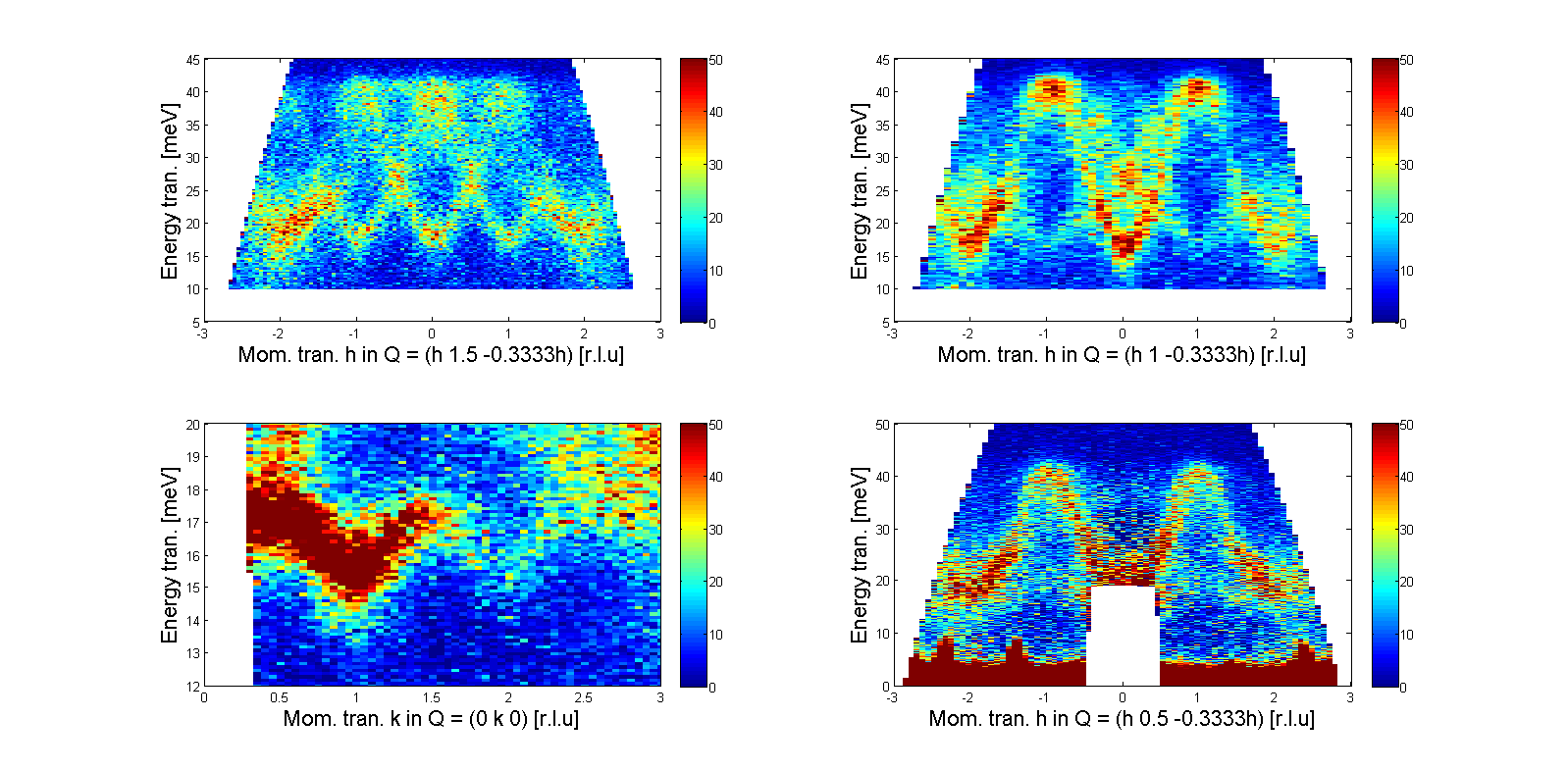However, before looking for predicted novel phenomena, it is important to determine just how close a system is to being a model magnetic system. In a recent experiment on the Merlin instrument at ISIS, Dr Andrew Wildes and Ms Diane Lançon of the ILL endeavoured to reveal the degree of model status for one candidate material – FePS3. The experiment demonstrated that the high neutron flux available on the instrument enables samples as small as 0.3 g to be studied.
FePS3 is a member of a family of quasi-two dimensional antiferromagnets, where the magnetic transition metal atoms form a honeycomb lattice in the ab plane. It appears to be a rare example of a model two-dimensional Ising-like antiferromagnet, ordering below TN~120 K, where the temperature dependent Bragg peak intensity can be fitted with an equation for a 2D Ising model on a honeycomb lattice. However, there are suggestions based on inelastic neutron powder measurements that FePS3 may be almost one-dimensional, which raises interesting possibilities in the study of critical dynamics and phase transitions close to dimensional cross-over points. In order to test the dimensionality of the system, an experiment to determine the magnon dispersion was therefore performed on Merlin.
Single crystal synthesis of FePS3 is non-trivial, and the best results give milligram sized platelets. Traditionally it would be assumed that such small samples were insufficient for inelastic neutron scattering experiments; but thanks to it being an S=2 system and the high neutron flux available on Merlin, it proved possible to obtain good quality data using a composite sample of 17 co-aligned single crystals with a total mass of 0.3 g. The experiments were performed using repetition-rate multiplication mode, exploiting the possibility to measure with multiple incident neutron energies when using the Gd chopper. This enabled the spin gap to be measured with high resolution simultaneously with the full energy range of the magnon dispersion, at temperatures above and below TN~120 K.
At base temperature, the results very clearly show the magnon dispersion along high symmetry directions. The data prove that the magnon dynamics may be modelled using a Heisenberg Hamiltonian with a single ion anisotropy, which had been previously estimated from the magnon dynamics measured from a powder sample. The quality of the data allowed them to be fitted to determine the dispersion accurately. They also show that the compound is not quite as close to a one-dimensional system as previously thought, as the dispersion along one of the high symmetry directions is slightly stronger than initially estimated from the powder data. The results of the fits are being used to verify and refine the magnetic exchange parameters. In addition, by measuring at a few temperatures above and below the transition temperature, the experiments allowed the change in the spin gap with temperature to be followed, which can be combined with other measurements to understand the critical properties of FePS3. Dr Wildes summarised the success of the experiment "Let's face it: the magnetic properties of the transition metal-PS3 compounds have been tragically overlooked. However, we're now putting that right thanks to the magic of MERLIN and to the talent and skills of its hardworking scientists. This was a hard experiment, but it worked beautifully. We probably couldn't have done it 5 years ago. I'm sure we couldn't have done it without MERLIN. "

Side-view of the composite sample of FePS_3 showing the 17 co-aligned crystals
View full-size image
Helen Walker
Research date: August 2014
Further Information
Contact Helen Walker
